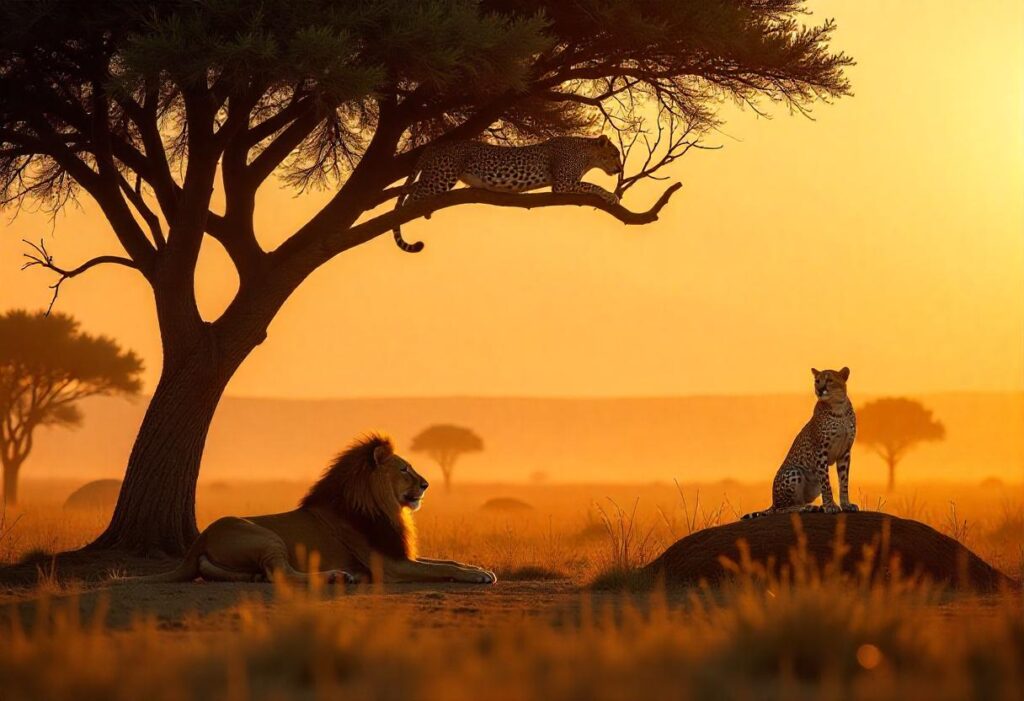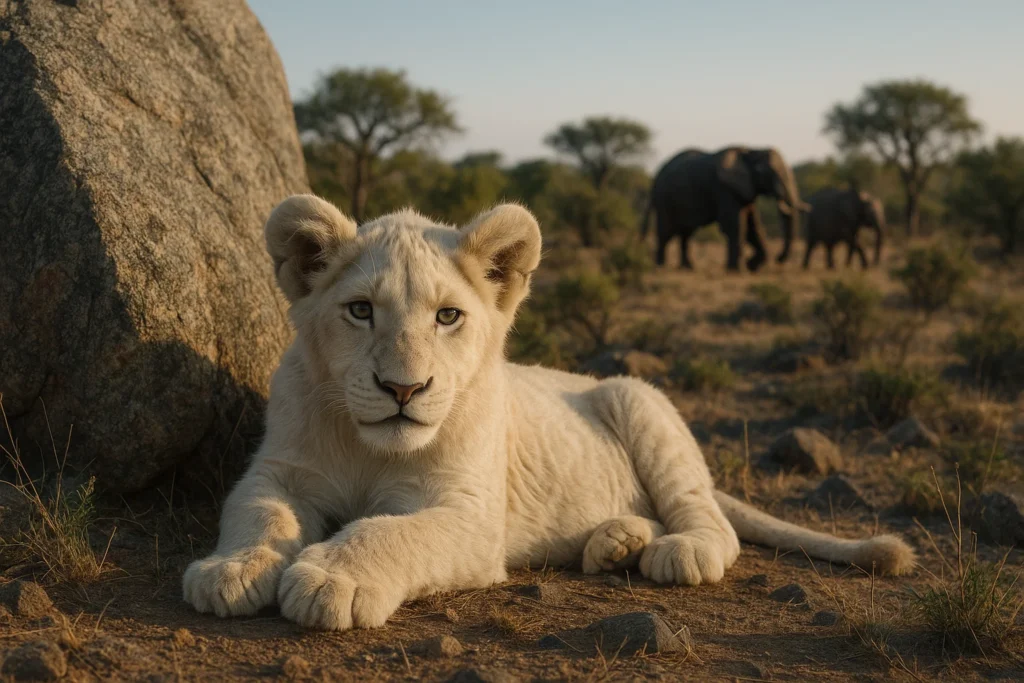Big cats are among the most sought-after animals on any African safari. But if you want to maximize your chances, knowing the best time to see lions in Africa, as well as leopards and cheetahs, is key. This guide breaks down when and where to go — by season and time of day — for the most thrilling predator sightings.
What affects predator sightings on safari?
Several factors influence your likelihood of spotting big cats:
- Seasonal wildlife movements (e.g. migrations and calving)
- Vegetation density (easier to see animals when grass is short)
- Temperature and time of day (predators are more active in cooler hours)
- Prey availability (predators follow herbivore herds)
Understanding these elements helps you plan your safari during windows of optimal predator activity.
Best time of year to see lions in Africa
Peak months: June to October (dry season)
This is the classic safari season across East and Southern Africa. With vegetation thinner and water sources limited, lions are easier to find, often resting near rivers or active at kills.
- Masai Mara, Kenya: July to October during the Great Migration
- Serengeti, Tanzania: June to October for dense lion populations and migration-related hunts
- Kruger, South Africa: Year-round, but winter months (May–September) offer better visibility
Best time to see leopards in Africa
Leopards are elusive and often solitary, but they thrive in areas with good cover and prey. You’ll improve your chances in:
Peak months: May to October (dry season)
- South Luangwa, Zambia: One of Africa’s best places for regular leopard sightings
- Sabi Sands, South Africa: Excellent year-round, but especially productive from June to September
- Okavango Delta, Botswana: May to October, when leopards patrol floodplains and tree lines
Leopards are more often seen in the early morning or late evening, resting in trees or hunting under low light.
Best time to see cheetahs in Africa
Cheetahs prefer open grasslands where they can use speed to their advantage. They avoid dense bush and high competition from lions or hyenas.
Peak months: December to March (green season in some regions)
- Serengeti (Ndutu area), Tanzania: January to March during calving season, when prey is abundant and terrain is open
- Masai Mara, Kenya: July to October during migration, especially in open plains
- Central Kalahari, Botswana: January to April for green season hunting opportunities
Because cheetahs hunt during daylight, they’re more likely to be seen in the late morning or afternoon — a contrast to most other predators.
Time of day: When predators are most active
- Dawn (5:30–7:30 am): Lions and leopards are most active before the heat of the day.
- Dusk (5:00–7:00 pm): Great for catching cats as they begin their evening hunts.
- Midday: Big cats often rest in the shade, making sightings possible but less dynamic.
- Night drives: Some camps offer after-dark excursions where leopards, lions, and hyenas can be seen using spotlights.
Safari tips to increase your chances of big cat sightings
- Go during the dry season: Better visibility and predator activity.
- Visit predator-rich reserves: Like Masai Mara, Sabi Sands, or South Luangwa.
- Hire an experienced guide: Trackers often recognize subtle signs of predator presence.
- Be patient: Big cat sightings often require time, silence, and observation.
Final thoughts
The best time to see predators in Africa depends on where you’re going and which species you hope to encounter. But with smart planning and the right expectations, lions, leopards, and cheetahs can become unforgettable highlights of your safari experience.
FAQs
No, but visiting the right locations in the right season greatly increases your chances. Expert guides and patience also help.
Generally yes, due to open terrain and concentrated wildlife. However, green season can be great for cheetahs and leopard activity in some regions.
Masai Mara, Serengeti, Sabi Sands, South Luangwa, and the Okavango Delta are among the best for consistent big cat encounters.
Yes, especially leopards and lions. Many camps in private reserves offer night drives with spotlights for nocturnal activity.
Cheetahs are more active during the day, especially in the late morning and afternoon — unlike most predators that prefer dusk and dawn.






